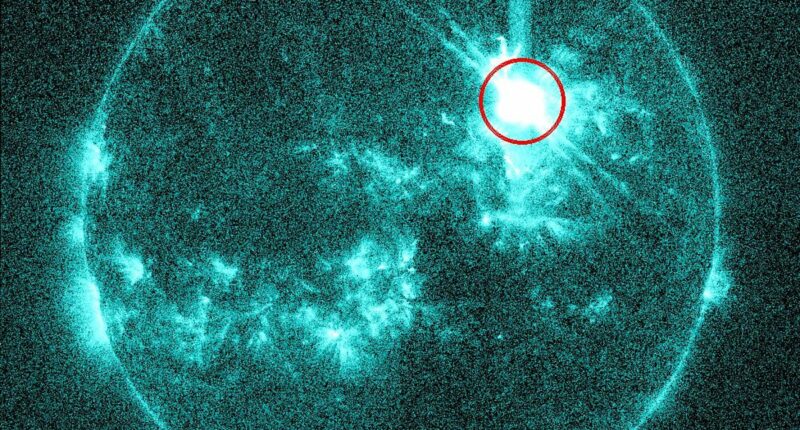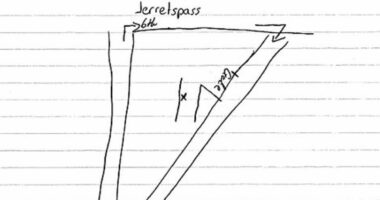Share this @internewscast.com
The sun has unleashed a colossal solar flare, marking the most significant event of the year and potentially impacting Earth starting Tuesday.
An intense X5.1-class flare, known for its potential to interfere with satellites, disrupt high-frequency radio communications, and affect high-altitude flights, erupted from the sun today.
This flare led to a temporary radio blackout over Europe and Africa at approximately 5 a.m. ET, momentarily impacting aviation, maritime operations, emergency services, GPS, radar systems, and satellite communications.
Space scientist Steph Yardley commented on the rarity of such solar activity, highlighting that these exceptionally energetic particles are so powerful that even ground-based detectors can register them. She noted, “Since 1942, there have only been 75 recorded instances,” in a post on the platform X.
Experts from NOAA are closely observing a potential coronal mass ejection (CME), a substantial cloud of solar material accompanied by magnetic fields, traveling at around 3,000 miles per second.
If this CME is directed towards Earth, it could lead to a significant geomagnetic storm, potentially disturbing Earth’s magnetic field from Tuesday night into Wednesday.
If it is headed for Earth, it could trigger a strong geomagnetic storm, disturbing Earth’s magnetic field overnight into Wednesday. Auroras may appear as far south as Pennsylvania, Iowa, and Oregon.
Power grids, GPS navigation, and HF radio communications could all be affected, NOAA shared in an alert.

A powerful X5.1-class flare, capable of disrupting satellites, high-frequency radio and high-altitude flights, burst from the sun today
Officials have issued a G3 Watch, warning that another CME from November 10 may arrive on the evening of November 11 and continue into November 12.
This flare came from sunspot AR4274, which has been highly active in recent days, producing two other significant flares on November 9 and 10.
Sunspots are temporary, darker patches on the sun’s surface that are cooler than the surrounding areas.
Officials warned that high-energy particles from the sun are triggering radiation alerts.
Passengers and crew on high-altitude polar flights may face slightly increased exposure. Satellites in low-Earth orbit, especially those flying over the poles, are vulnerable to temporary electrical disruptions.
Tuesday’s flare joins a recent series of powerful eruptions from the sunspot, including an X1.7-class flare on November 9 and an X1.2 flare on November 10.
Solar flares are classified by their X-ray brightness, measured in a specific wavelength range by satellites.
They fall into five main categories, A, B, C, M, and X, ranging from the weakest to the most powerful.
Each class represents roughly a tenfold increase in energy, with X-class flares being the strongest and capable of disrupting satellites, radio communications, and even high-altitude flights.
Within each class, flares are further ranked from 1 to 9 to indicate their relative strength, with higher numbers producing more intense effects.
This is a developing story… More updates to come.

















